Android Emulator vs GeeLark: Key Differences You Need to Know
Since we launched, we’ve been getting the same question: “Is GeeLark an Android emulator?”
The short answer? A HARD NO.
There’s so much interest in this topic, and we know there’s confusion about cloud phones versus Android emulators. Therefore, we thought it was time to provide a simple explanation.
In this article, we’ll dive into the key features of GeeLark and Android emulators, point out their differences, and help you figure out which option is best for you.
How GeeLark and Android Emulators Work
Android Emulator
Emulators like NoxPlayer, BlueStacks, LDPlayer, and MUMU create a virtual Android environment on your PC, simulating the experience of using a smartphone or tablet. They leverage your computer’s hardware—such as the CPU, RAM, and GPU—to power this virtual system, allowing you to run Android apps and games seamlessly without a physical phone.
To enhance performance, especially for graphics-intensive games, emulators like NoxPlayer use “hardware acceleration.” This technology utilizes your computer’s GPU, improving graphics quality and speeding up game performance.
In a nutshell, whether using NoxPlayer, BlueStacks, or other popular emulators, they trick your PC into functioning like an Android device, enabling you to enjoy your favorite mobile games and apps smoothly from your desktop.
GeeLark
Unlike Android emulators that imitate an Android environment using your computer’s hardware, GeeLark’s cloud phones run in the cloud and provide the same hardware setup as real Android smartphones. Each cloud phone features its own unique hardware details.
Instead of running a virtual phone on your device, you access a real Android device that operates in the cloud.
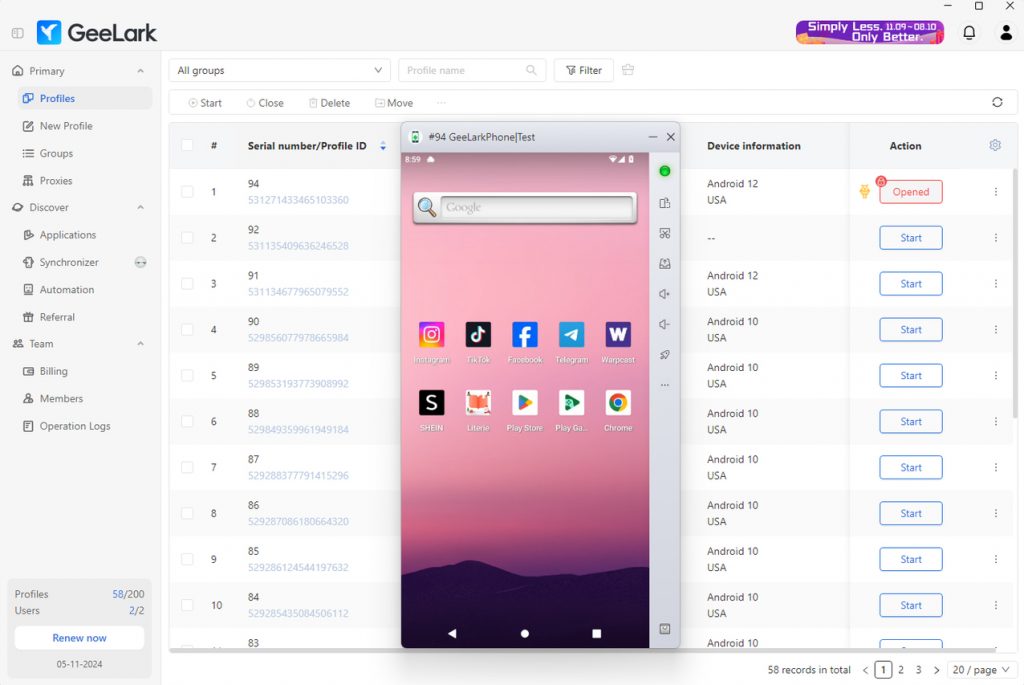
Through partnerships with various cloud phone providers, GeeLark enables you to rent a cloud phone directly via the app. Once you choose and set up your cloud phone, it functions just like a physical smartphone. You can install apps, manage social media, or do anything else you’d typically do on a regular Android device—all without owning any actual hardware.
In short, GeeLark provides the flexibility to use a real Android device remotely, freeing up your local device’s resources while still ensuring the full experience of using a smartphone, all through the cloud.
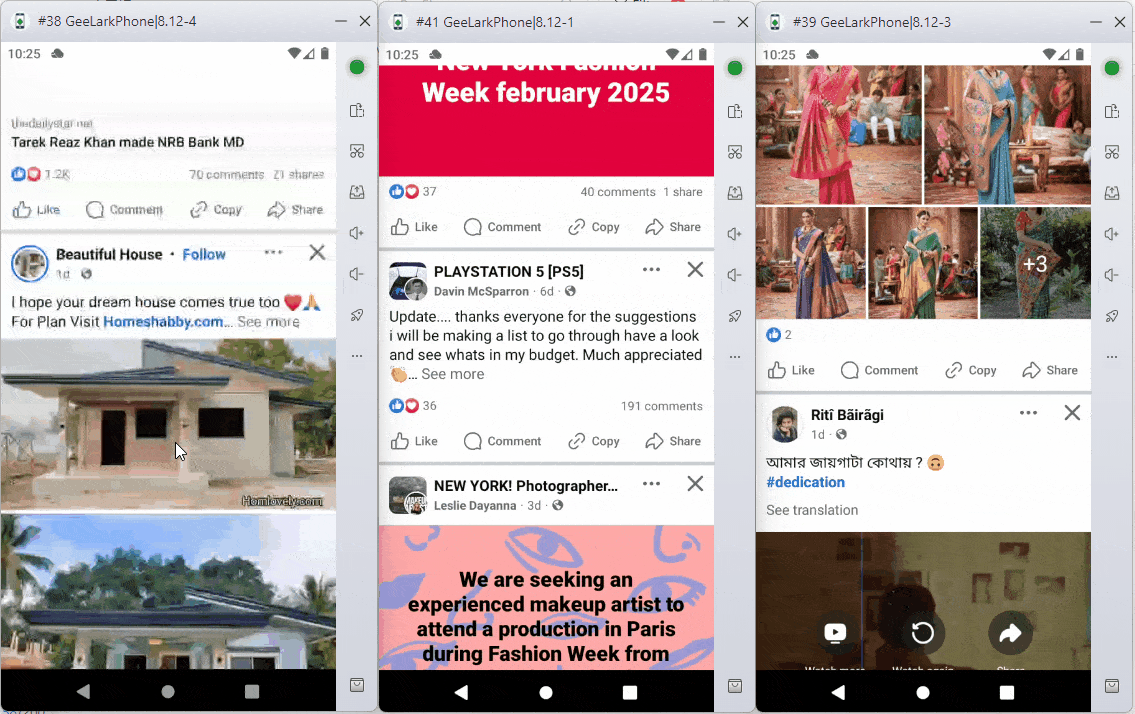
When you start using GeeLark, you create a cloud phone profile. This profile connects you to a cloud phone, enabling you to install apps, manage social media, and perform tasks just like on a regular phone. The key difference is that all the work happens remotely in the cloud, saving your device’s storage and processing power.
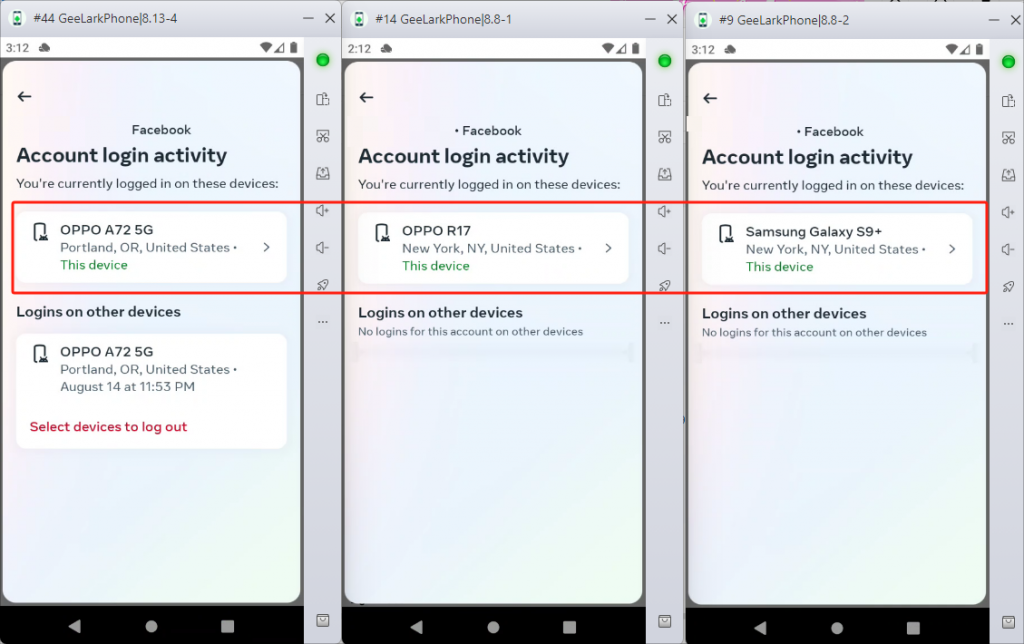
Storage and Data
Android Emulator
Android emulators let users manage storage and data in a virtual environment, but running an emulator consumes local disk space on your computer.
Every time you install an app or game, the files and data are stored on your device. Thus, the more emulators you run simultaneously, the more storage you’ll need. Over time, data like app caches, user settings, and files can accumulate and occupy significant space.
NoxPlayer users may notice this build-up after some time. To keep everything running smoothly and ensure adequate storage, regularly cleaning up and managing this data is wise.

GeeLark
GeeLark operates as a cloud-based mobile solution, meaning all data from each virtual device gets securely encrypted and stored in the cloud, not on your local machine. This setup alleviates concerns about local disk space since only the GeeLark software itself requires some storage on your computer.
Unlike traditional Android emulators that can quickly clutter your hard drive with app data, caches, and user files, GeeLark provides a smarter, more efficient approach. You can manage hundreds, thousands, or tens of thousands of cloud phone environments with no worries about local disk space!
Resource Usage Differences
Android Emulator
When you create an emulator using popular software like NoxPlayer, BlueStacks, or LDPlayer, your computer uses some of its CPU and RAM for each emulator you run. With just one emulator open, it takes up minimal resources, allowing it to work well even on entry-level machines.
If you open multiple emulators at the same time, they will consume significantly more resources since each one requires its own CPU power and RAM. This can quickly drain your computer’s resources, potentially slowing it down or causing it to crash, especially if your machine isn’t high-performance.
If you use several emulators to manage diverse accounts or tasks, it’s essential to monitor your resource usage. Ensure your computer can handle the extra load without deceleration.

GeeLark
GeeLark is designed to utilize system resources efficiently. For instance, running 10 cloud-based virtual devices uses only about 1000 MB of memory. This is much lower than many other Android emulators, which can require significantly more space.
By leveraging the cloud for processing, GeeLark keeps your computer running smoothly, even while you manage multiple accounts. This makes it an excellent choice for both casual users and businesses needing to run multiple devices without robust hardware.
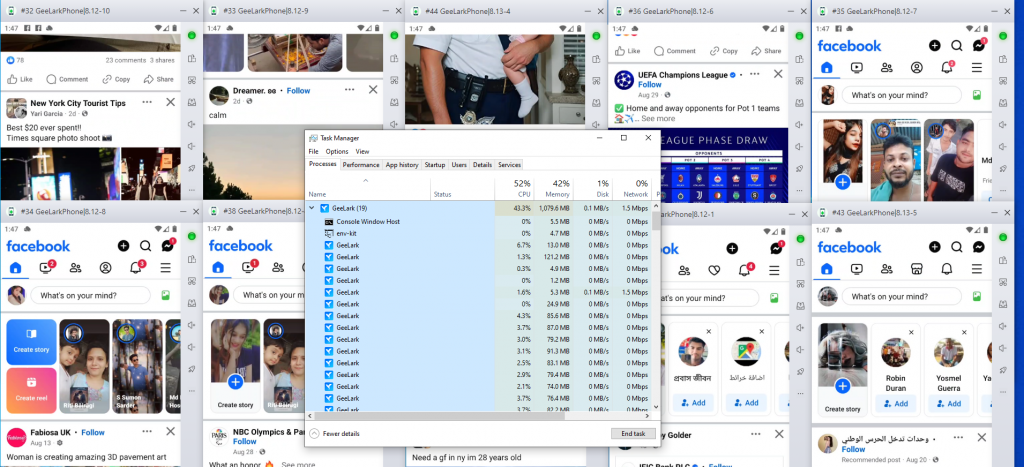
Network Usage
Android Emulator
Most Android emulators like NoxPlayer, BlueStacks, and LDPlayer use your local network by default, simplifying offline gaming or running apps without an internet connection. However, when managing multiple accounts on platforms like Facebook or Telegram, proxies are crucial to avoid account blocks.
For a few accounts, setting up a proxy for each emulator instance is straightforward. But as your account numbers grow into dozens or hundreds, the process can become overwhelming.
Keeping track of which proxy corresponds to each emulator can get confusing and lead to mistakes. This scenario can slow you down and increase the risk of encountering issues with your accounts. What starts as a simple task can rapidly become complicated, consuming significant time.
GeeLark
GeeLark Cloud Phones must be online and require a proxy to function. Each GeeLark phone’s network relies on the proxy you set up. For example, if you assign a US proxy when creating a cloud phone, the phone will connect to the internet using the US IP.

What makes GeeLark convenient is that users can choose to create cloud phone environments one by one, utilize the quick creation feature, or use templates for an even faster setup.

Templates are especially useful when assigning different proxy information to many cloud phones. You can use an Excel file to input all the proxy information quickly and select the system you want.

This setup saves a lot of time and simplifies managing and creating multiple cloud phones.
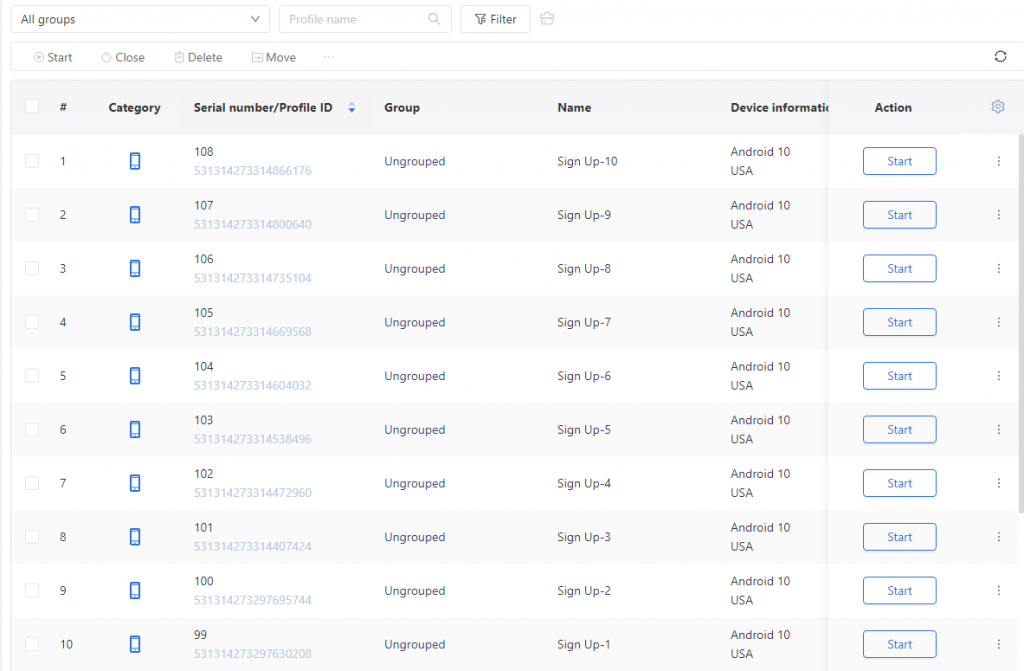
Apps Installation
Android Emulator
Using Android emulators can be cumbersome. You need to manually install apps on each device, which can become tiresome, especially when dealing with many of them. This process takes time and increases the risk of mistakes.
Moreover, while many Android emulators optimize primarily for gaming, they might face compatibility issues when running other types of applications, leading to crashes or unexpected behavior.

GeeLark
On the other hand, GeeLark Cloud Phones are designed to support many popular apps effortlessly, such as Facebook, TikTok, Instagram, Telegram, WhatsApp, and Warpcast. You can find and install the apps you want directly from the “Applications” section.
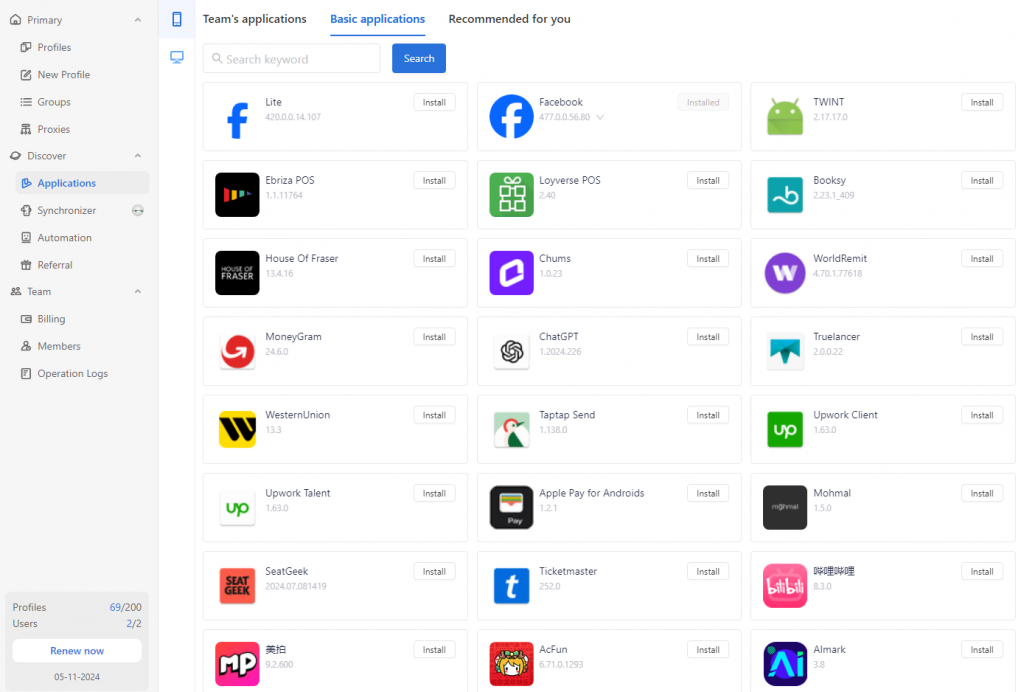
Once you select the desired applications in the app center, they’ll install automatically the first time you launch your cloud phone. It usually takes just a minute or two.

If you can’t find a specific app, no worries! You can always upload your own apk/xapk files.

Android Emulator or GeeLark?
Android Emulator
Most users resort to Android emulators to play mobile games on their computer. They provide a larger screen, better controls with a keyboard and mouse, and can even help improve game performance. Emulators are ideal for players wanting to enjoy mobile games without being limited to a small phone screen.
While you can manage multiple accounts with Android emulators, the process becomes complicated. Each emulator instance requires separate setup, which takes time, especially with numerous accounts. This situation makes emulators less practical for larger operations or team-based work.
In short, Android emulators are fantastic for personal gaming, but if you’re handling many accounts or need team collaboration, they might not be the best fit.
GeeLark
GeeLark is ideal for individuals or businesses managing numerous different accounts across various platforms. Imagine running dozens, hundreds, or thousands of accounts on apps like social media, e-commerce, or advertising platforms.
Each GeeLark cloud phone operates like a separate device. You can assign a different IP address to each cloud phone, making it appear as if each account runs from a completely different location and device. This setup enhances the safety and security of your accounts, providing unique digital fingerprints for each one. It resembles how anti-detect browsers work, as each browser operates independently to manage multiple accounts effortlessly and securely.
Moreover, if you’re part of a team, GeeLark is a game-changer. Your team members can log in from anywhere, on any computer, without being tied to a specific location. It’s a flexible and seamless way to collaborate and manage your accounts.
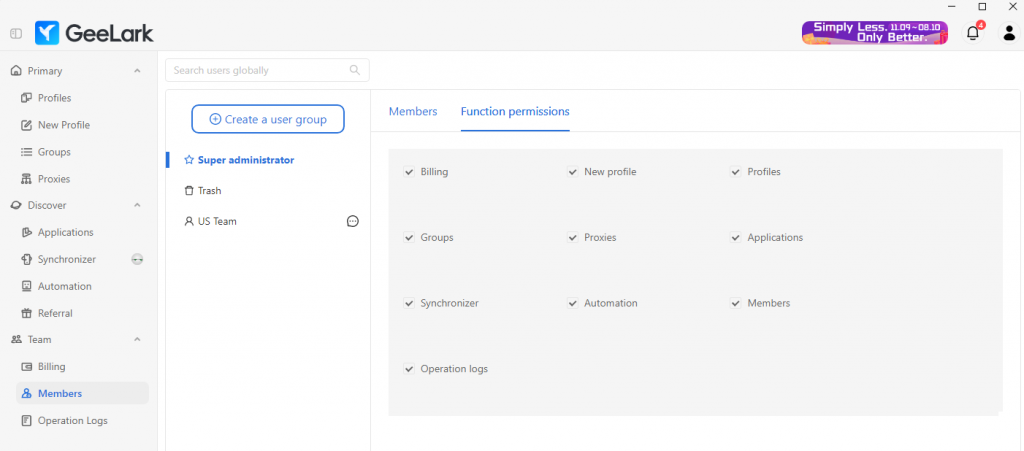
In short, GeeLark is the go-to tool for anyone needing to manage numerous accounts simultaneously while keeping everything secure and easy to control.
FAQs
Are Android emulators free?
Several free Android emulators exist, with popular options including BlueStacks, NoxPlayer, and LDPlayer. Each of these provides a free version with core features. Nonetheless, free emulators may come with limitations, such as ads or restrictions on advanced features.
Is GeeLark free to use?
GeeLark isn’t completely free, but it does offer a free trial. When you sign up, you can try the cloud phone service for 60 minutes at no cost. This let you explore its features and determine if it meets your needs before committing to a paid plan. After the trial, you’ll need to select a subscription plan based on your intended use.
Is it better to use an Android emulator or GeeLark?
Whether an Android emulator is better than GeeLark truly depends on your needs. Just to clarify, GeeLark isn’t actually an Android emulator—it’s a cloud-based service providing access to entire Android mobile environments for managing multiple accounts.
GeeLark excels if you want to manage many cloud phones at once or set distinct settings across numerous devices.
However, if you merely wish to play Android games on your computer or test a single app, a standard emulator like BlueStacks or NoxPlayer might be simpler to use.
Do emulators slow down your PC?
Yes, emulators can indeed slow down your PC, especially if you run multiple instances or if your computer lacks sufficient processing power, RAM, or graphics capacity. Take Android emulators like BlueStacks or NoxPlayer; they consume system resources, and if you attempt to run several simultaneously, your computer might become sluggish. Conversely, cloud-based platforms like GeeLark handle most of the resource usage in the cloud, minimizing the load on your local machine.











